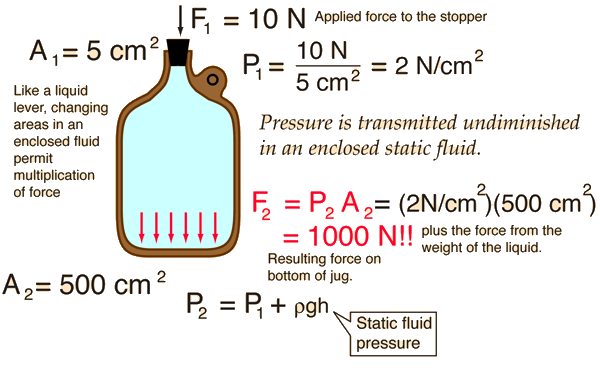Pressure is transmitted undiminished in an enclosed static fluid.
 Any externally applied pressure is transmitted to all parts of the enclosed fluid, making possible a large multiplication of force (
Any externally applied pressure is transmitted to all parts of the enclosed fluid, making possible a large multiplication of force (hydraulic press principle
). The pressure at the bottom of the jug is equal to the externally applied pressure on the top of the fluid plus the static fluid pressure
from the weight of the liquid.
Hydraulic Press
A multiplication of forcecan be achieved by the application of fluidpressure according toPascal's principle, which for the two pistons implies
P1 = P2
This allows the lifting of a heavy load with a small force, as in an auto hydraulic lift, but of course there can be no multiplication of work, so in an ideal case with no frictional loss:
Winput = Woutput
Calculation
|  |
Hydraulic Press Calculation
|
 Any externally applied pressure is transmitted to all parts of the enclosed fluid, making possible a large multiplication of force (hydraulic press principle). The pressure at the bottom of the jug is equal to the externally applied pressure on the top of the fluid plus the static fluid pressure from the weight of the liquid.
Any externally applied pressure is transmitted to all parts of the enclosed fluid, making possible a large multiplication of force (hydraulic press principle). The pressure at the bottom of the jug is equal to the externally applied pressure on the top of the fluid plus the static fluid pressure from the weight of the liquid.